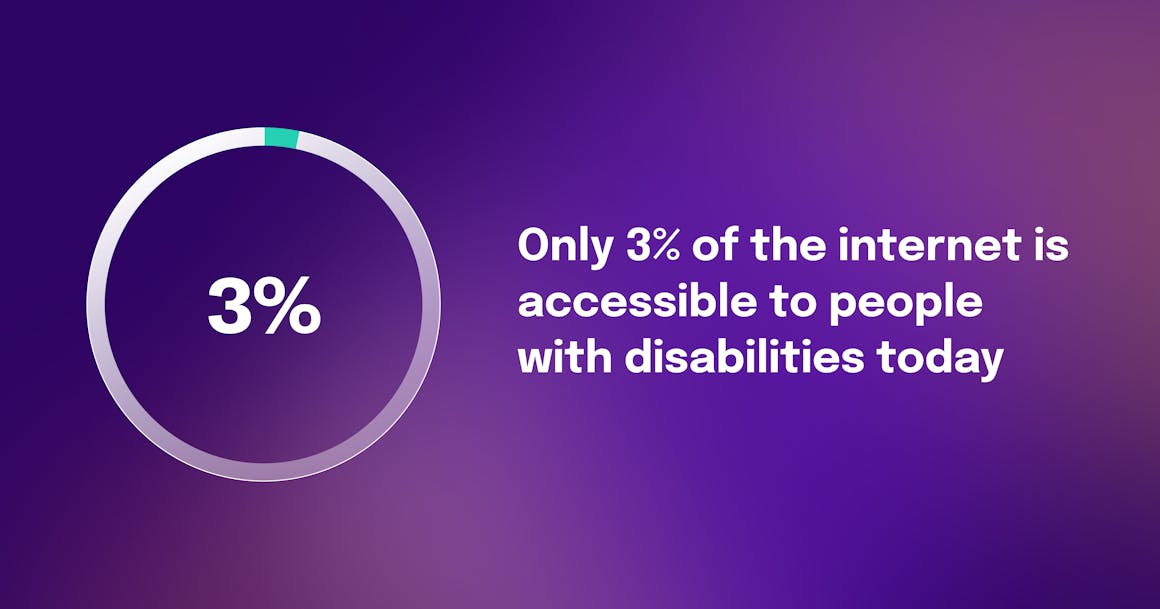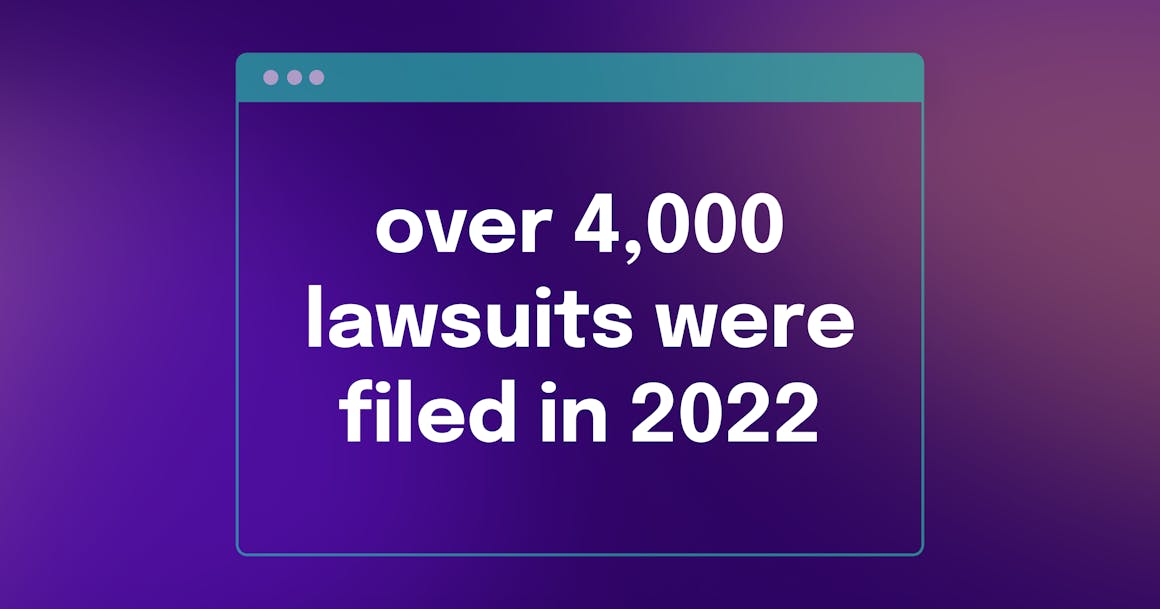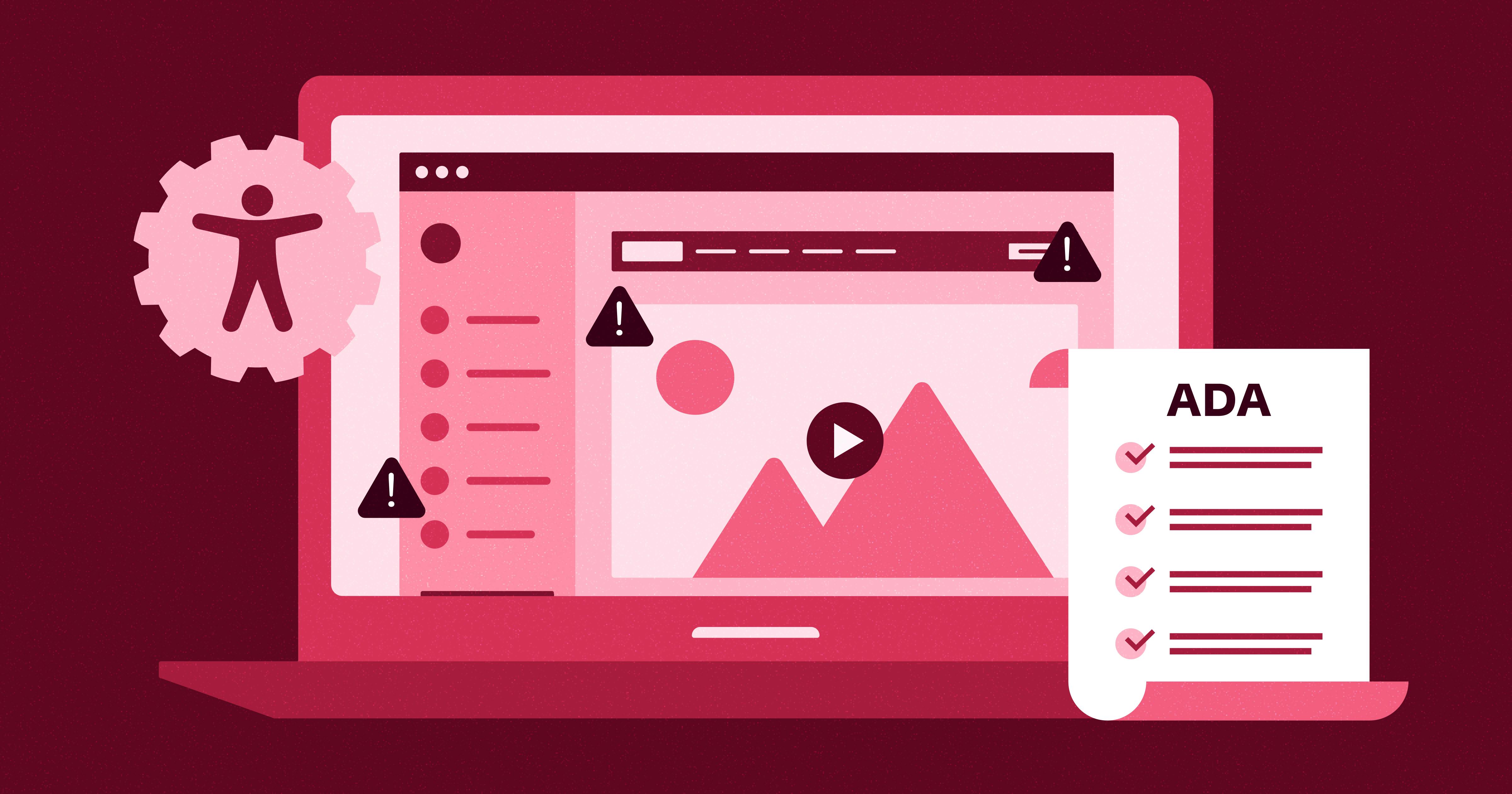The Importance of Web Accessibility in 15 Stats
The Importance of Web Accessibility in 15 Stats


Ready to see AudioEye in action?
Watch Demo
Learn 15 stats that show the importance of digital accessibility and why businesses should make their websites accessible.
Whether you’re just starting to learn about web accessibility, or have already taken steps to make your website accessible, here are a few stats to help you understand the state of digital accessibility today.
Why Is Digital Accessibility Important?
- According to the Centers for Disease Control and Prevention (CDC), one in four Americans, or 26% of the population, lives with some type of disability. (Data source)
- The World Health Organization (WHO) estimates that 1.3 billion people, or 16% of the world’s population, have a disability. (Data source)
- According to WHO, by 2030, more than 2 billion people will need to use assistive products (including technology tools, such as screen readers). (Data source)
- Based on the Bureau of Labor Statistics 2021-2022 data, the unemployment rate among Americans with disabilities is 9%, or more than twice as high as for those without disabilities. (Data source)
- Over 70% of people with disabilities have non-visible disability, such as cognitive or learning impairments, according to the Global Economics of Disability 2020 report. (Data source)

How Accessible Is the Internet Today?
- According to WebAim’s 2022 report, 97% of the top 1,000,000 home pages have accessibility errors. Put it differently, only 3% of the internet is currently accessible. As the biggest ongoing study of internet accessibility, WebAim’s annual report statistics are often used to describe the entire internet’s accessibility. (Data source)
- Based on an analysis of 3,500 websites across 22 industries, including healthcare, e-commerce, and employment, AudioEye found that 79% of the websites had at least three severe accessibility issues, i.e., issues that could potentially block an assistive technology user from interacting with the content and/or completing the goal of a site visit, such as submitting a form or requesting information. (Data source)
- In the same AudioEye study, 83% of e-commerce sites, 78% of healthcare sites, and 77% of jobs and career sites had accessibility issues that block or significantly impact a user’s ability to complete key tasks, such as viewing product descriptions, completing a purchase, filling out an application, or booking an appointment. (Data source)
- In an AudioEye survey, which asked 70 assistive technology users to provide feedback on the internet accessibility, respondents said that keyboard navigation, missing or unhelpful headings, and empty or missing form labels were the top accessibility issues they faced when navigating websites. These issues persist across retail, healthcare, finance/banking, education, and other websites that play an essential role in everyday life. (Data source)
- In an 2021 AudioEye online survey of 500 business leaders, website designers, and developers, 74% of respondents cited “cost” as the most important concern in addressing website accessibility. (Data source)

Why Should Businesses Prioritize Web Accessibility?
Making their websites accessible to people of all abilities is one of the most concrete ways for businesses to ensure inclusive and welcoming experiences for both their customers and employees. Prioritizing web accessibility can also help businesses expand market reach and mitigate legal risk.
- Based on UsableNet’s 2021 ADA Digital Accessibility Lawsuits report, which covers websites, mobile, and video, over 4,000 lawsuits were filed in 2022. Nearly 500 of these lawsuits, or 15% were against companies that had been sued for digital accessibility before. (Data source)
- Between 2017 and 2021, the number of ADA-related lawsuits went up 400%. (Data source)
- 74% of digital accessibility lawsuits in 2021 were against e-commerce companies. (Data source)
- In a 2021 AudioEye survey of assistive technology users, 54% of respondents said they feel that e-commerce companies “don’t care about earning their business.” (Data source)
- According to the Global Economics of Disability 2020 report, people with disabilities control $1.9 trillion in disposable income. That number reaches over $10 trillion, when their friends and families are included. (Data source)
One of the paradoxes in web accessibility today is that while the general awareness for it is growing — fueled by the rise of accessibility lawsuits and diversity and inclusion investments — there is still a tremendous lack of practical information and transparency on how to implement accessibility best practices.
To learn more about the key challenges in web accessibility today and how to close the digital accessibility gap, check out AudioEye’s white paper on Building for Digital Accessibility at Scale.
Ready to see AudioEye in action?
Watch Demo
Ready to test your website for accessibility?
Share post
Keep Reading

7 Best Accessible Design Tools in 2025
From AI image generators to color contrast checkers, learn how AudioEye designers create accessible designs.
accessibility
December 12, 2024

Visual Accessibility Guidelines and Best Practices
Follow these visual accessibility guidelines and best practices to create a site or app that’s inclusive and meets legal accessibility standards.
accessibility
December 10, 2024

9 Best ADA Compliance Software and Services
Accessibility is important for an inclusive internet, and that’s why the ADA exists. These software and services help you achieve full legal compliance.
accessibility
compliance
December 09, 2024
